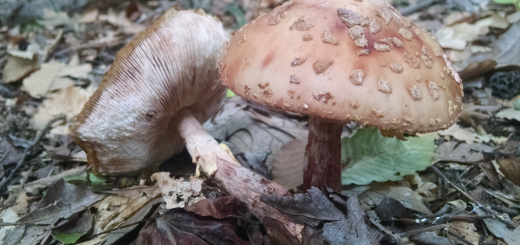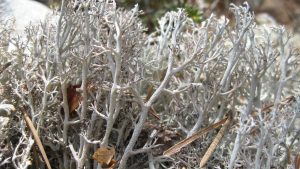#013: Characteristics of Phylum Basidiomycota [Archived]
Note: This is an archived post. You can find the current version of this post here.
Phylum Basidiomycota accounts for about 35% of all described fungal species.* This phylum contains the fungi that people are most familiar with. The classic “Mario mushroom” (based on Amanita muscaria), the grocery store button mushroom and other varieties of Agaricus bisporus, shiitakes, oyster mushrooms, and even the major “magic mushrooms” are all basidiomycetes. However, basidiomycota also includes rusts and smuts, which are economically important plant pathogens, some yeasts, and a few lichenized fungi. Like the ascomycota, the basidiomycota fill a variety of different ecological roles. Many form mycorrhizae with plants (amanitas, chanterelles, russulas, etc.), others parasitize plants (rusts, smuts, honey mushrooms, etc.), a lot decompose organic material (cultivated mushrooms, yeasts, etc.), and some live in a variety of symbioses with insects (this includes some interesting mutualisms with leaf cutter ants and termites).
The cell structure of basidiomycota is also very similar to that of ascomycota. This is hardly surprising, as these two phyla are “sister taxa.” Ascomycota and basidiomycota share a common ancestor and together make up the monophyletic subkingdom Dikarya. The method of forming sexual spores sets the basidiomycota apart from all other fungi. Basidiomycota form sexual spores (basidiospores) externally on small spikes called sterigmata that protrude from the meiotic cell. Most basidiomycetes form four basidiospores per basidium, but some only form two (for example, Agaricus bisporus). Many basidiomycetes form ballistospores, which are forcibly shot off the sterigmata. The mechanism behind ballistospores is not fully understood, but involves the liquid-filled “hilar droplet” that forms at the base of the spore. This apparently evolved early and was lost in marine species and species with a gasteroid fruitbody (like puffballs). Ballistospores can be formed by yeast, hyphae, basidia, and ballistospores (I don’t know how that last one works) and can be sexual or asexual. Basidiomycetes have a very long dikaryotic phase: for the majority of its life, the mycelium contains two nuclei per cell (one from each parent, see FFF#004 and #009). Some basidiomycetes form clamp connections to regulate the number of nuclei in each hyphal compartment. This feature is unique to the basidiomycota, but not shared by all basidiomycota.
*If you’ve been keeping track of these percentages, you may have noticed that they add up to more than 100%. These numbers are constantly changing, so it’s hard to know what the “real” percentage is.
See Further:
http://tolweb.org/Basidiomycota
http://www.botany.hawaii.edu/faculty/wong/Bot201/Basidiomycota/Basidiomycota.htm
http://classic.sidwell.edu/us/science/vlb5/Labs/Classification_Lab/Eukarya/Fungi/Basidiomycota/
http://www.mushroomexpert.com/basidiomycetes.html (how do I know if my mushroom is a basidio?)








![#011: Characteristics of Kingdom Fungi [Archived]](https://www.fungusfactfriday.com/wp-content/themes/hueman/assets/front/img/thumb-small-empty.png)


Detailed, it was that I needed